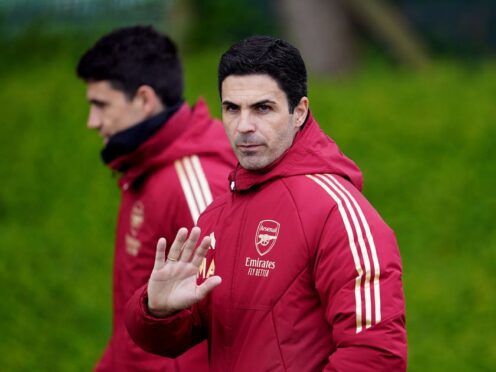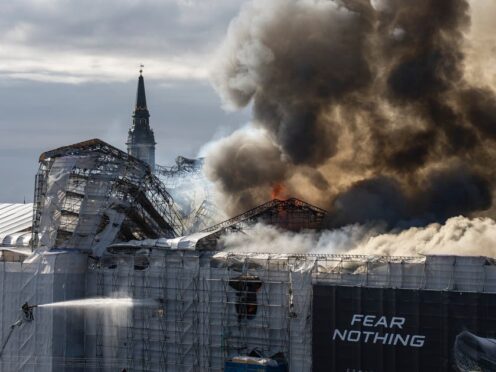By late summer in 1918, the First World War seemed to be locked in a hellish stalemate.
Millions of men had already perished during the conflict and there was a weariness and sense of resignation that the hostilities could carry on indefinitely even as the casualty list mounted.
British recruits seemed to be getting younger every day, the German army was literally starving amid the mud and chaos of the trenches and there was a frightening surge in cases of Spanish influenza.
However, the beginning of August brought with it a renewed impetus and a determination to break the deadlock that had developed since 1914.
The result was the start of the Battle of Amiens on August 8, which marked the first great offensive of the last three months of the war.
There would be an abundance of setbacks, grievous loss of life and destruction on an unprecedented scale during these last 90 to 100 days, but the spirit of such regiments as the Gordon Highlanders ultimately proved irresistible.
Amiens, in northern France, 120km from Paris, was a significant choice of location to launch the Allied onslaught. It had been one of the main objectives for the German Spring Offensive earlier in the year.
This was because the city was where the British and French armies met and was a crucial link in the Western Front.
All summer, it had been targeted by railway guns to sever rail links and interfere with communications, but it always remained in British hands, no matter how hard the Germans pushed.
As Ruth Duncan, the curator of the Gordon Highlanders Museum in Aberdeen, said: “The area was favourable for an attack because hard soil and the dry weather of recent months meant the ground would be suitable for tanks and cavalry attacks.
“An outline for the plan was sent to GHQ in mid-July for a major attack utilising the hard lessons that had been taught during the past three years of trench warfare; surprise was key and secrecy was stressed at all levels.
“Straw was put on forward roads and ropes wrapped around wheels to disguise the appearance of tracks leading to the Amiens sector.
“They even drafted an elaborate series of orders to make it look like the Canadians were being deployed to the north instead of the south.
“When August 8 arrived, there was a punishing joint attack by British, French, Canadian, Australian and American forces which finally signalled that the Allies were ready to take the fight to the enemy.”
The battle began at 4.20am with the devastating bombardment of over 2,000 guns aimed at German 2nd Army positions.
Simultaneously, eight divisions of British, Australian and Canadian troops moved forward and crossed No Man’s Land to head to their pre-arranged objectives.
Their opening movements were obscured by thick mist which hung about for hours as phosphorus grenades were dropped from aircraft overhead.
German resistance ranged from stubborn in some places to non-existent in others, as Australian, Canadian and French troops pushed forward to their objectives. By 11am, the Canadian Corps had advanced about four miles.
This was regarded as a ‘black day’ for the German army: a period where they suffered a staggering number of casualties, with estimates as high as 48,000 men.
However, there was no quick route to victory. On the contrary, the roads deteriorated into muddy quagmires, progress stalled, the initial advances ground to a halt and the offensive was halted on August 11.
By this stage half of the soldiers in the British Army were under 20-years-old and, while eager to fight, were lacking experience and steadiness. 1st Gordons received a draft of 114 rank and file, but the regiment had lost so many men it was stretched to the limit.
Local tragedies resonated amid the global carnage.
Private Charles Blackhall Gray, aged 29, died on August 8 from gunshot wound in his left thigh while serving with A Company 1st/5th Gordons.
He was the son of William and Mary Gray, of Whitehouse in Aberdeenshire and had a twin brother, who was also in the Gordons.
That brother, 2nd Lieutenant James Blackhall Gray, subsequently died on October 27 in Italy and is buried in Tezze British Cemetery.
James was married to Edith Gray, of 162 Crown Street in Aberdeen: one of millions of women across Britain whose loved ones never returned from the Continent.
Indeed, the Gordon Highlanders lost thousands of troops and were recruiting new blood even throughout the second half of 1918.
And, as Ms Duncan added, they had also been tasked with other challenges, amid the hostilities elsewhere.
She said: “The 5th battalion matched up to Izel-les-Hameau and arrived at 8am on August 8.
“After a wash and brush up, they lined the streets, awaiting the arrival of His Majesty the King George V, who was motoring to the 44th Highland Brigades, where all present cheered him heartily as he passed.
“The 6th battalion in Caucort, in northern France, undertook training, inspections and received a draft of new officers and 205 other ranks, who were posted to their relevant companies.
“The 7th battalion started the day with parades and inspections as usual and received two separate drafts of men and NCOs.”
The Gordons were lining up for the second phase of the offensive, which was launched on August 21.
They played sports in the afternoon – including a match against the Seaforth Highlanders which they lost – and trained and took part in parades, while new drafts of men joined the ranks.
They even attended concerts on August 9 and 12, and on August 10. Ist Gordons marched to the main road between Ferfay and Bellery, where the King passed along the road in his motorcar.
It worked as a morale booster, but there were still appalling numbers of casualties, both during and after the first phase in Amiens.
The spread of the flu epidemic also became ever more insidious.
In June and July 1918, half a million soldiers were treated in “flu infirmaries” behind the lines.
Ruth Duncan added: “This type of flu was not usually fatal. That killer strain emerged during the winter of 1918-19 with up to 50 million people dying globally by the end of 1919.
“But there were many other challenges to overcome. It was the last days of the war, but not everything went according to plan.”
The Gordon Highlanders Museum has organised an interactive exhibition, chronicling the Last 100 Days of the First World War.
For more information, visit www.gordonhighlanders.com/Visit#.W2MTvUxFyUk.










